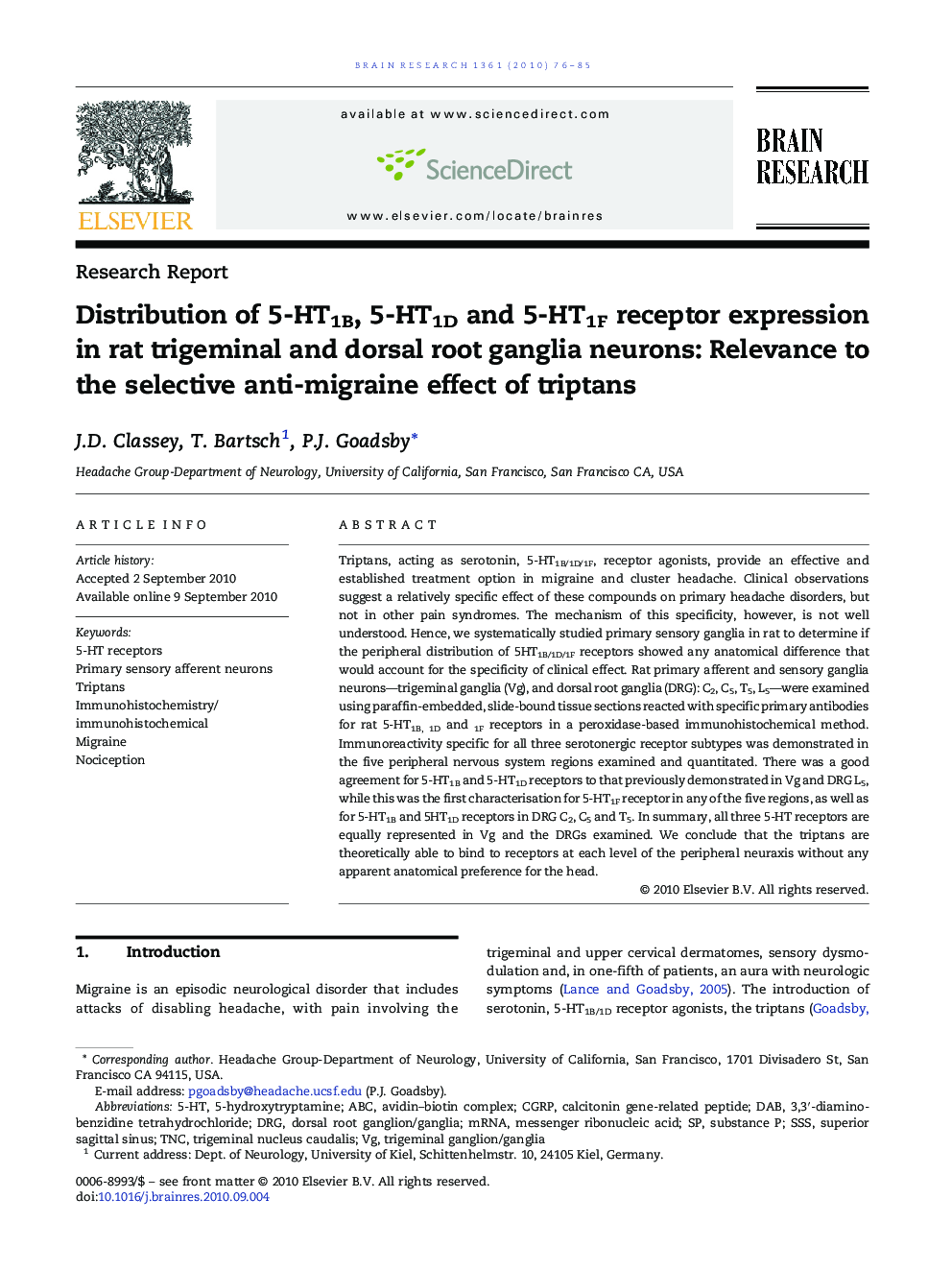| کد مقاله | کد نشریه | سال انتشار | مقاله انگلیسی | نسخه تمام متن |
|---|---|---|---|---|
| 4326250 | 1614078 | 2010 | 10 صفحه PDF | دانلود رایگان |

Triptans, acting as serotonin, 5-HT1B/1D/1F, receptor agonists, provide an effective and established treatment option in migraine and cluster headache. Clinical observations suggest a relatively specific effect of these compounds on primary headache disorders, but not in other pain syndromes. The mechanism of this specificity, however, is not well understood. Hence, we systematically studied primary sensory ganglia in rat to determine if the peripheral distribution of 5HT1B/1D/1F receptors showed any anatomical difference that would account for the specificity of clinical effect. Rat primary afferent and sensory ganglia neurons—trigeminal ganglia (Vg), and dorsal root ganglia (DRG): C2, C5, T5, L5—were examined using paraffin-embedded, slide-bound tissue sections reacted with specific primary antibodies for rat 5-HT1B, 1D and 1F receptors in a peroxidase-based immunohistochemical method. Immunoreactivity specific for all three serotonergic receptor subtypes was demonstrated in the five peripheral nervous system regions examined and quantitated. There was a good agreement for 5-HT1B and 5-HT1D receptors to that previously demonstrated in Vg and DRG L5, while this was the first characterisation for 5-HT1F receptor in any of the five regions, as well as for 5-HT1B and 5HT1D receptors in DRG C2, C5 and T5. In summary, all three 5-HT receptors are equally represented in Vg and the DRGs examined. We conclude that the triptans are theoretically able to bind to receptors at each level of the peripheral neuraxis without any apparent anatomical preference for the head.
Research Highlights
► Clinical observations suggest that serotonin, 5-HT1B/1D/1F, receptor agonists, provide an effective and specific form of treatment for headache yet their mechanism of action remains unclear.
► We systematically studied primary sensory ganglia in rat to determine if the peripheral distribution of 5HT1B/1D/1F receptors showed any anatomical difference that would account for the specificity of clinical effect.
► All three 5-HT receptors are equally represented in Vg and the DRGs examined.
► We conclude that the triptans are theoretically able to bind to receptors at each level of the peripheral neuraxis without any apparent anatomical preference for the head.
Journal: Brain Research - Volume 1361, 18 November 2010, Pages 76–85